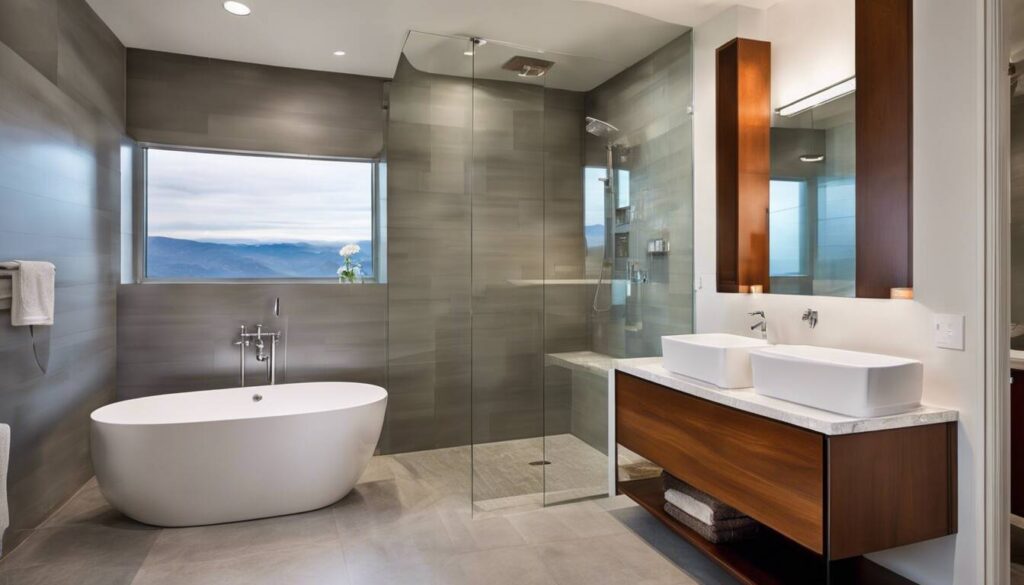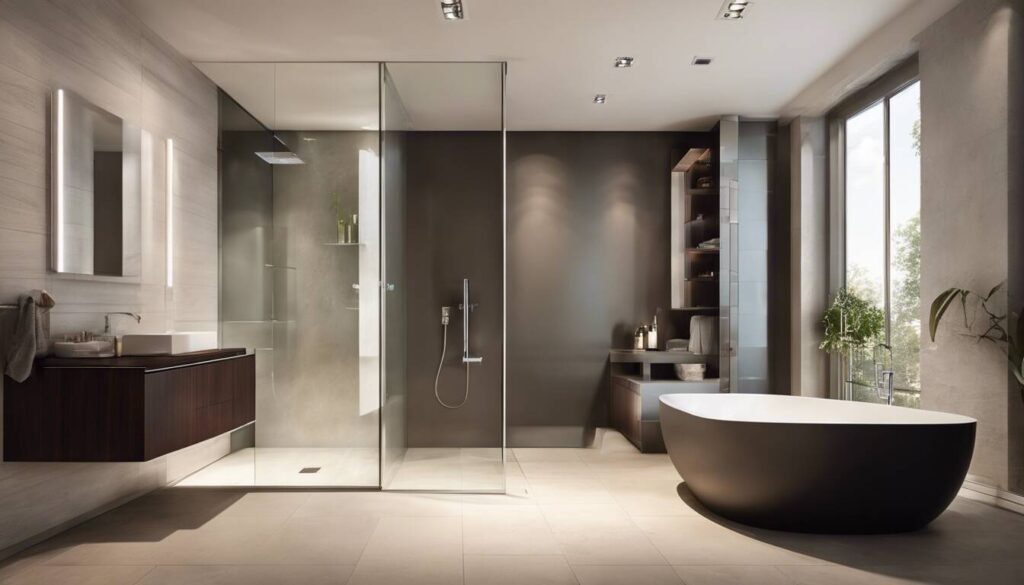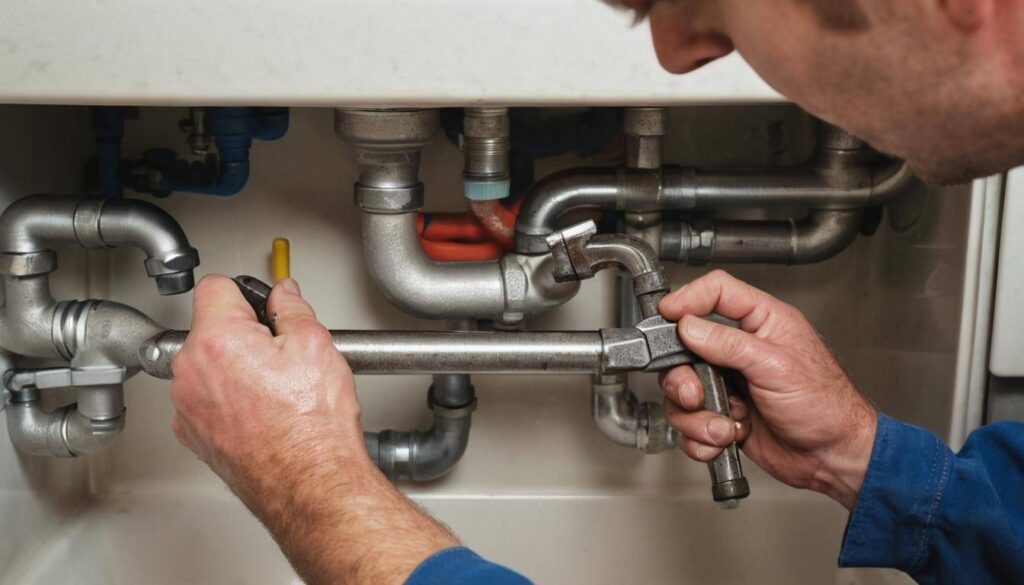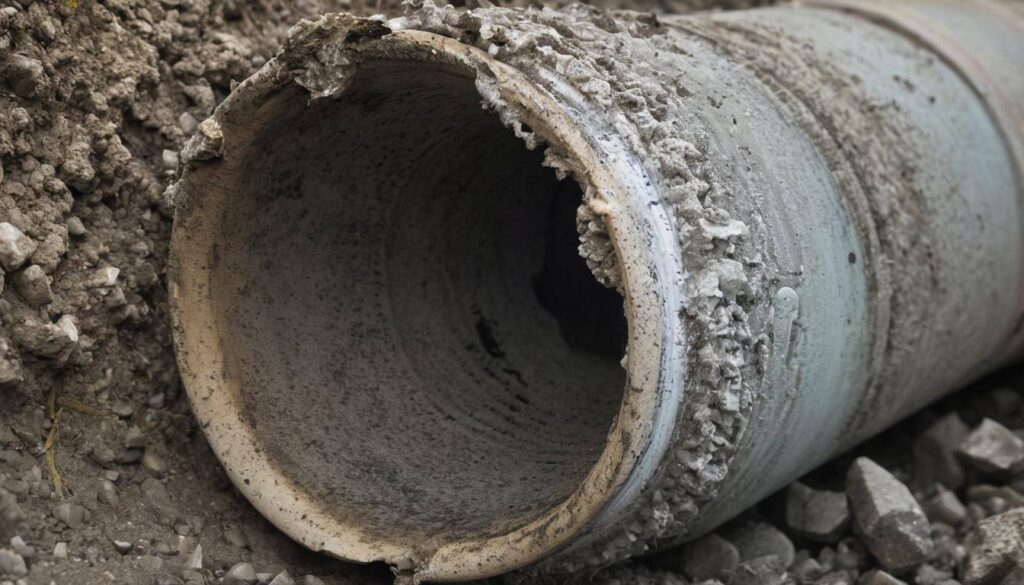Tankless Water Heaters: Pros, Cons, and Factors to Consider Before Installing
Choosing a tankless water heater is like stepping into a warm, constant stream of comfort. This revolutionary system provides a never-ending supply of hot water, bypassing the limitations of traditional tanks that require pauses for reheating. But there’s more beneath the surface – just like a river flow might hide surprising twists and turns. Deciding on installing a tankless water heater isn’t merely about enjoying hot showers at will; it also involves understanding its operations, energy requirements, potential drawbacks, and installation considerations. As we dive into the advantages…
Tankless water heaters offer continuous hot water, energy efficiency, and a longer lifespan but may have higher upfront costs and require a specific flow rate for optimal performance. It’s crucial to consider your household’s hot water usage patterns and consult a professional before making a decision.

Pros of Tankless Water Heaters
Tankless water heaters have certainly earned their spot in modern homes for several compelling reasons. Let’s explore some key benefits:
Endless Supply of Hot Water
One of the most appealing features of tankless water heaters is the continuous flow of hot water they provide. Traditional tank water heaters may run out of hot water after multiple consecutive uses, leaving you in the cold, quite literally. In contrast, tankless systems heat water on demand, ensuring that you always have a supply of hot water at your fingertips—no need to wait for a reheating cycle after depleting a storage tank.
Energy and Space Efficiency of Tankless Systems
The space-saving aspect isn’t something to be overlooked either. Tankless water heaters are compact and designed to be mounted on a wall, saving valuable floor space. Moreover, they are significantly more energy-efficient than traditional tanks because they only heat water when needed. Without the need to maintain a large volume of water at a specific temperature, tankless systems help reduce energy consumption and your monthly utility bills.
Let’s consider some interesting numbers:
| Household Hot Water Usage | Energy Efficiency Increase |
|---|---|
| Less than 41 gallons daily | Almost 34% more energy efficiency |
Lower Maintenance Requirements
When it comes to maintenance, tankless water heaters come out on top once again. With no stored water – there’s less risk of corrosion, scale buildup, or leaks commonly found in traditional tanks. As a result, long-term maintenance requirements for tankless systems are considerably lower, saving you both time and money associated with repairs and regular upkeep.
The benefits of tankless water heaters undoubtedly make them an attractive option for many homeowners. But as with any home improvement decision, there are a few drawbacks to consider as well. Let’s discuss the potential downsides to using a tankless system.
Endless Supply of Hot Water
Imagine stepping into a warm shower, and the water feels amazing. Then someone in another bathroom turns on the tap or starts the washing machine, and suddenly your nice hot water turns cold. With a tankless water heater, you won’t have to worry about that. They are designed to produce hot water on demand, which means you’ll never run out of it. It’s like having a magic faucet that keeps pouring hot water forever.
In a busy household with multiple people taking showers, doing dishes, or running laundry, running out of hot water can be a real annoyance. A tankless water heater solves this problem by providing a constant flow of hot water whenever you need it. This is particularly convenient for larger families or during times when there’s high demand for hot water, such as holidays or when guests stay over.
Imagine not having to time your showers just to avoid nothing but cold water. The peace of mind that comes with knowing that everyone can enjoy a hot shower no matter what time of day is truly priceless.
And it’s not just about convenience; it’s also about comfort. Tankless water heaters ensure that you can fill the tub for those luxurious baths without any worry of running out of hot water midway through.
In the next section, we will delve into another significant benefit of tankless water heaters: energy efficiency. This dovetails directly with the endless supply of hot water as it relates to optimizing home utility costs and reducing environmental impact.
Energy and Space Efficiency of Tankless Systems
Traditional tank water heaters store a large amount of water and keep it hot all the time, even when it’s not being used. On the other hand, tankless water heaters heat water only as needed, which means they don’t have to constantly use energy to keep a large tank of water at a certain temperature. This difference in operation makes tankless water heaters much more energy efficient.
This efficiency can significantly lower your energy bills over time. Since tankless systems exclusively warm up water as it passes through the heating element, there’s no need for a continuous energy supply to maintain a standing reservoir of hot water. Imagine the savings adding up over the years due to this streamlined process.
Think about it this way: with a traditional system, you’re paying to keep a full bathtub of water hot at all times, even when you’re sleeping or on vacation. It’s like having your car engine running all night when you’re asleep without actually moving anywhere. But with a tankless system, you heat the water only when you turn on the tap or start the shower – just like starting your car’s engine only when you’re going to use it.
Not only do these tankless systems heat water more efficiently, but they also take up much less space. Traditional tanks are big and bulky and can take up quite a bit of room in basements or utility closets. In contrast, tankless systems are compact and can even be mounted on walls, saving valuable space in your home for other important items.
Moreover, the space savings you get from a tankless system are not just about freeing up room for storage or usage. It’s also about flexibility in placement and aesthetics. The compact nature of these units allows you to even install them outdoors or in unconventional spaces where a traditional system may not fit.
In terms of efficiency and space management, think of a tankless unit as a sleek modern smartphone compared to an old clunky desktop computer—both do similar jobs but take up vastly different amounts of space and energy while doing so.
With these points in mind, it’s clear that tankless water heaters offer both financial savings through energy efficiency and more freedom in terms of where they can be placed in your home. Now, let’s explore the lower maintenance requirements associated with these innovative systems.
Lower Maintenance Requirements
Installing a tankless water heater doesn’t just mean enjoying endless hot water; it also equates to less time spent on maintenance. Traditional tank heaters have more parts and store water, creating an environment where mineral deposits can build up and cause corrosion.
Tankless water heaters have fewer components and no stored water to cause corrosion, so they often require less frequent professional servicing compared to traditional tank heaters. This can save you money in the long run as you won’t need to spend as much on maintenance.
Reduced Chance of Corrosion
Corrosion is a common issue with traditional tank systems due to the constant storage of water. Over time, this can lead to rusting and damage. However, with tankless systems, the risk of corrosion is significantly reduced because there is no standing water to cause this issue.
Minimizing Scale Buildup
Another benefit of tankless water heaters is the reduced likelihood of scale buildup. Traditional tank water heaters store a large amount of heated water, leading to minerals separating out and forming scale. In contrast, tankless systems heat the water as it flows through, which reduces the chance of these mineral deposits accumulating and causing problems.
Imagine pouring out a glass of water from a pitcher that you’ve left on the counter for weeks versus straight from the tap. The stagnant water in the pitcher accumulates impurities and dust over time, while the flowing tap water remains clear and clean.
With tankless water heaters, you essentially get “tap” hot water.
| Tankless Water Heaters | Traditional Tank Heaters |
|---|---|
| Less frequent professional servicing | More frequent professional servicing |
| Less affected by corrosion | More prone to corrosion issues |
It’s like giving your car regular oil changes—maintaining it consistently prevents larger issues down the road compared to neglecting it until something goes wrong.
With fewer parts prone to malfunction or breakdown, the chances are slim that you’ll require regular professional servicing. This results in less disruption to your home life as well as potential cost savings from fewer service calls. So not only will you benefit from endless hot water and energy savings, but you’ll also enjoy greater peace of mind knowing that your maintenance needs are minimized—with fewer worries about system breakdowns or costly repairs.
In recognizing the practical advantages of tankless water heaters, it’s time now to explore their potential economic benefits in terms of long-term cost savings.
Potential Monetary Savings of Tankless Water Heaters
Tankless water heaters are often lauded for their energy efficiency, and this efficiency can translate into significant long-term cost savings on utility bills. Unlike traditional water tanks, tankless models heat water on demand, meaning they only use energy when hot water is needed. This contrasts with traditional tanks that keep a large volume of water continuously heated.
By avoiding the constant reheating and standby heat loss associated with traditional tank water heaters, tankless units minimize energy waste and therefore reduce the amount spent on utility bills each month. The U.S. Department of Energy estimates that a typical family can save $100 or more per year with an ENERGY STAR®-certified tankless water heater.
Did you know? In addition to saving money on utility bills, the longer lifespan and durability of tankless water heaters means homeowners may ultimately spend less on replacements and repairs over time in comparison to traditional units.
Think about it: Traditional tanks have an average lifespan of about 10-15 years, whereas tankless water heaters can last up to 20 years or more with proper maintenance. This means that homeowners won’t have to replace their unit as frequently, saving them from the expense of purchasing new equipment every decade or so.
For instance, let’s say you purchase a traditional water heater at a lower initial cost but it needs to be replaced after 12 years. On the other hand, you install a tankless system for a higher upfront investment but it lasts for 20 years. The overall cost of ownership for the tankless water heater is actually lower when factoring in both the reduced energy bills and fewer replacements.
Furthermore, increased demand for tankless water heaters has led to technological advancements and competitive pricing in recent years, making these systems not only space-saving and efficient but also within reach for many homeowners looking to upgrade.
It’s important to remember though that actual savings will depend on usage patterns, local utility rates, installation costs, and maintenance expenses.
In summary, the potential monetary savings associated with tankless water heaters stem from their improved energy efficiency, longer lifespan, and decreased need for repairs or replacements compared to traditional tank systems.
Cons of Tankless Water Heaters

While tankless water heaters offer numerous benefits, they are not without their downsides. It’s essential to be aware of these potential drawbacks before making a decision.
Higher Upfront Costs
One significant drawback of tankless water heaters is their higher upfront costs compared to traditional tank systems. The initial investment for a tankless water heater, including purchase and installation, can be notably higher. However, over time, the energy savings associated with tankless water heaters may offset this higher initial cost.
Furthermore, installation costs for tankless water heaters can be higher because they often require reconfiguring the existing infrastructure. For example, additional electrical work or gas line upgrades may be necessary to accommodate a tankless system. These considerations can add to the overall installation expenses.
Outflow Limitations
In some cases, a single tankless water heater may struggle to meet the demand for hot water in larger households, particularly when multiple points of use are active simultaneously. This limitation can lead to reduced water flow and lower temperatures at different fixtures during peak usage times.
To address this issue, some homeowners opt for a multi-unit configuration, where multiple tankless water heaters are installed in parallel to meet the increased demand. However, this approach can significantly raise the installation costs and may require more space for the additional units.
The Reliance on a Single Heat Source
Another consideration is that tankless water heaters rely on a single heat source, whether it’s electricity or gas. In the event of a malfunction or breakdown, there is no stored hot water available as a backup. This means that if the system encounters an issue, there could be an immediate disruption in the supply of hot water until repairs are completed.
For instance, if a traditional tank-style water heater experiences a temporary malfunction, the stored hot water reserves can still be utilized until the issue is resolved. This built-in redundancy can provide greater peace of mind in terms of continuous access to hot water.
Considering these drawbacks is essential when evaluating whether a tankless water heater is the right choice for your home. While these limitations exist, many homeowners find that the long-term benefits and energy savings outweigh these concerns.
With these factors in mind, careful consideration and thorough research are vital steps in making an informed decision about whether a tankless water heater aligns with your household’s specific needs and preferences.
Higher Upfront Costs
When considering tankless water heaters, it’s important to acknowledge the fact that this technology typically carries a higher initial investment compared to traditional tank systems. The primary components contributing to this upfront cost include the purchase price of the unit itself and the expense associated with professional installation.
The purchase price of a tankless water heater is notably higher than that of a conventional storage tank model. This is attributed to the advanced technology and components utilized in manufacturing these units, which are engineered to deliver on-demand hot water. These technological advancements account for a substantial portion of the increased upfront cost.
Moreover, the installation process for tankless water heaters typically requires specialized expertise due to their unique operational nature. Professional installation services often come with a higher price tag, as they demand specialized plumbing and electrical work. Ensuring correct installation and optimizing performance requires skilled professionals familiar with the intricacies of tankless systems.
Consider this – installing a tankless water heater may entail upgrades to electrical systems or gas lines, which can elevate the installation expenses. Additionally, since these units are often mounted on walls, structural modifications may be necessary to accommodate their weight and size, significantly contributing to escalating total installation costs compared to conventional tank water heaters.
While the initial investment for a tankless water heater may be higher than that of traditional systems, it’s important to consider the long-term benefits and energy savings that these advanced units offer. Making an informed decision regarding your home’s water heating system involves assessing both short-term costs and long-term advantages.
In grappling with the quest for an optimal water heating system, it’s essential to maneuver around potential limitations that could impact your choice. Let’s now navigate through outflow limitations—a pivotal aspect often overlooked in selecting a water heating solution.
Outflow Limitations
Tankless water heaters are renowned for their on-demand hot water supply, but they do have their limits. In homes with high simultaneous hot water demand, such as running multiple showers and appliances at once, a single tankless water heater might struggle to supply sufficient hot water to all points of use simultaneously.
Think of it this way: when you turn on the hot water tap, cold water runs through a pipe into the tankless unit and the heat exchanger quickly heats it up. Then, the hot water flows out to your shower, sink, or appliance. But if the demand for hot water is too high, the heater might not be able to heat all the water fast enough, especially if it’s an older unit or a smaller model.
This can lead to what’s known in the industry as “cold-water sandwich.” This happens when you’re using hot water and then someone else turns on another faucet or appliance, causing a sudden decrease in temperature. You’ll feel that brief burst of cold before the heater kicks in again to warm up the fresh wave of cold water.
So, if you have a large family or tend to use a lot of hot water at once (picture two teenagers taking long showers while you’re running the dishwasher and doing laundry), you may run into some challenges with a single tankless unit keeping up with all that demand.
For example, let’s say that during a winter morning, your partner is taking a warm shower while you’re running the washing machine and preparing breakfast with the dishwasher running. If your tankless water heater has trouble keeping up with this level of demand, you may find that there isn’t enough hot water at all points of use. This could lead to discomfort and inconvenience for everyone in the house.
To overcome this limitation, homeowners might opt for a whole-house system that includes two or more tankless units working together. Another option is to install point-of-use tankless water heaters at specific locations within your home where hot water demand is highest. These solutions can help ensure that you have sufficient hot water supply even during times of peak demand.
Understanding these outflow limitations is crucial when considering whether a tankless water heater is right for your home or not. Now let’s dive into another important consideration: energy efficiency.
Now we’ll turn our attention to another essential factor to consider—relying on a single heat source and its potential impact on your home’s comfort and utility costs.
The Reliance on a Single Heat Source
One of the factors that sets tankless water heaters apart from traditional systems is their dependence on a single heat source. Unlike tank-style heaters, which often have a larger storage capacity and might provide some hot water even if one component fails, tankless units rely solely on their heating element to provide hot water on demand. This means that if the heating unit encounters an issue, you may temporarily be left without a supply of hot water until the problem is addressed.
This can be quite inconvenient, especially for households that rely heavily on a consistent supply of hot water. It’s essential to understand this potential drawback and be prepared to address any issues promptly, as doing so will help minimize any disruption to your daily routine.
For instance, imagine the inconvenience of having guests over and suddenly finding yourself without hot water due to a malfunction in the tankless heater. It could lead to frustration and discomfort for everyone involved.
This reliance on a single heat source places greater importance on regular maintenance and immediate attention to any signs of trouble with the heater. Scheduling professional inspections and being proactive about addressing any malfunctions or performance issues can go a long way in maintaining the consistent supply of hot water in your home.
Understanding the potential challenges that arise from the reliance on a single heat source underscores the need for proactive maintenance and swift response to any heater-related issues to ensure uninterrupted access to hot water in your household.
Factors to Consider Before Installing a Tankless Water Heater
When it comes to installing a tankless water heater, it can be an exciting prospect, promising energy efficiency and endless hot water. However, before taking the plunge, it’s important to conduct a thorough assessment of your household’s unique requirements and constraints.
The first factor to consider is the size of your household. A larger household with a high demand for hot water may require multiple tankless units or a larger unit with a higher flow rate. Conversely, smaller households might find a single smaller unit sufficient to meet their needs.
Next, examining your hot water usage patterns is essential. Do you frequently use hot water for multiple activities simultaneously, such as running the dishwasher while taking a shower? This can help determine the flow rate needed for your tankless system. It’s important to match the unit’s capacity to your peak hot water demand.
For instance, if you live in a home with three bathrooms and often have family members taking showers at the same time, this will impact the size and number of tankless units needed to power each bathroom effectively.
Another key consideration is available space for installation. Unlike traditional water heaters, tankless systems take up significantly less space as they don’t require large storage tanks. However, it’s crucial to be mindful of where you plan to install it, as certain areas may require additional venting or retrofitting.
The existing infrastructure also plays a vital role. If you’re replacing a traditional water heater with a tankless system, consideration of the electrical or gas setup in your home is crucial. Installing a gas-powered tankless unit may necessitate modifications to your existing gas line and venting system. To put it simply, installing a tankless water heater is not like buying a standard appliance. It requires careful planning akin to redesigning sections of your home—requiring both spatial and infrastructural considerations that directly influence its performance and efficiency.
Careful contemplation of these factors will ensure that your decision to install a tankless water heater aligns seamlessly with your household’s unique requirements and constraints.



